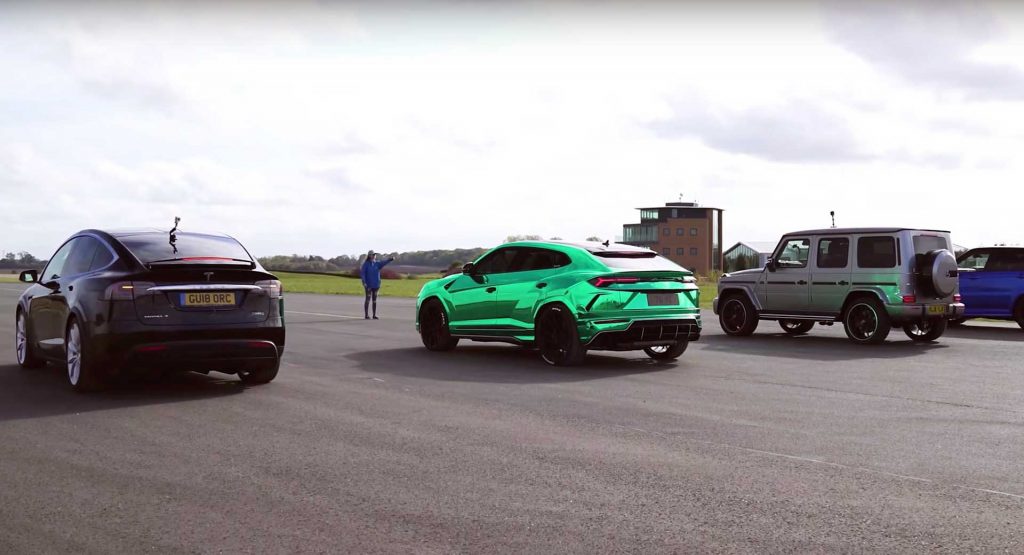Drag racing an SUV may have seemed rather silly a few years ago. But these days, automakers and producing some of the fastest, most powerful sport-utes and crossovers the world has ever known.
They still might not handle like sports cars when the road turns all bendy, but in a straight line, they’ll burn rubber with the best of ’em. So which is the quickest?
Leave it to the blokes at CarWow to find out. And they’ve lined up a spectacular array of high-powered, high-riding machinery for this drag race, and brought a camera or two to capture it all.
In the left lane is an electric vehicle – but not just any electric vehicle. This is the Tesla Model X P100D, a $140k piece of circuitry with the electric equivalent of 762 horsepower (568 kW) and 791 lb-ft (1,072 Nm) of torque on tap. With Ludicrous Mode engaged, it’ll run to 60 in under three seconds.
That’s mighty quick for a crossover – electric or otherwise. But they’ve lined up some rather muscular, conventionally powered vehicles to take it on, each with a force-fed V8 under the hood. Like the Lamborghini Urus, the first crossover from the Raging Bull marque, armed with a 4.0-liter twin-turbo V8 rated at 641 hp (478 kW) and 627 lb-ft (850 Nm) to deliver a quoted 0-62 time of 3.6 seconds.
Packing a similar engine in a boxier form is the new Mercedes-AMG G63, dispatching a lower 577 hp (430 kW) and the same 627 lb-ft (850 Nm) to sprint to 62 in 4.5 seconds. And they’re joined by the Range Rover Sport SVR, whose larger 5.0-liter V8 is supercharged to the tune of 575 hp (422 kW) and 516 lb-ft (700 Nm), running to 60 in four seconds flat.
On paper, then, it seems a no-brainer. But how does that translate to the tarmac? And just how big a difference are we looking at? And does the rolling start make a difference over a standing start? You’ll want to watch the video for yourself to find out.



